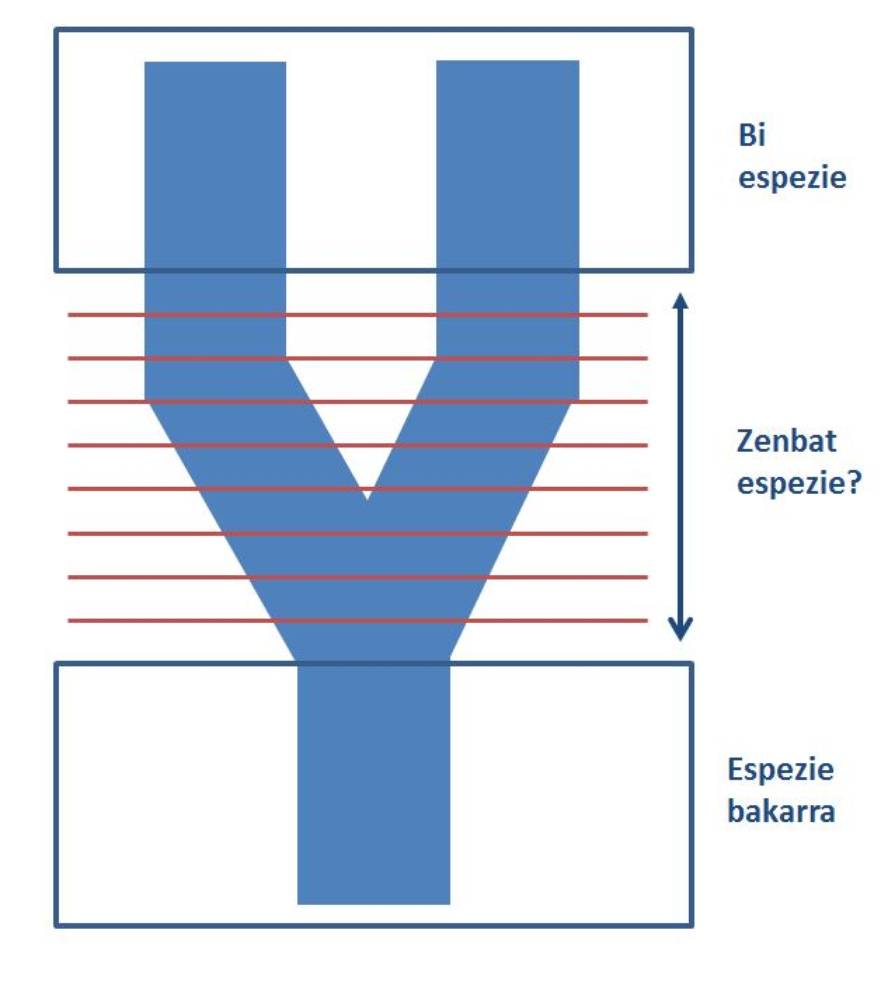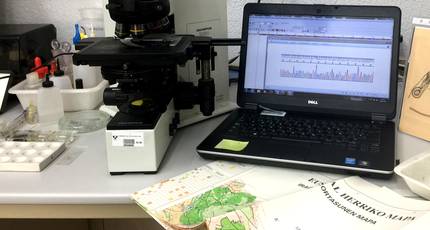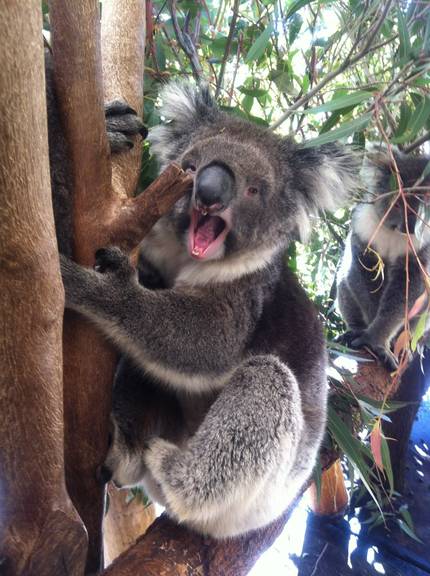Current trends in zoology

Perhaps you have never heard of Kevin De Queiroz, and the truth is that until the decade of 2010 its harmonizing concept of species has not spread in the zoo world, although the most famous work of this American zoologist, Species concepts and species - Species delimitation - was published in 2007. Why is he an integrator? Because its definition combines most of the above: evolutionary, morphological and biological, among others. It seems a very simple idea, and so it is: the common component underlying the concepts of previous species is the “line of metapopulation that evolves separately”, and De Queiroz proposes that this is the only characteristic of the species.
However, his most remarkable suggestion, undoubtedly, is to consider the other properties of the species as secondary. In fact, when the divergence of two lines occurs, due to evolution, both acquire properties such as monophilia, different ecological corners and morphological characteristics, reproductive isolation, etc. (see figure 1). The zoologists agree on the number of species that exist before and after acquiring these properties, that is, only one species before the divergence of the lines occurs and then two species. In the center, however, as the lines move away (but before separating them), there are great differences depending on the concept of species to which it refers. For De Queiroz, if we use these characteristics as a criterion of evidence, we can estimate the division of lines, that is, delimiting the species. The latter has a lot to do with what is mentioned in the following section, integrative taxonomy.
Integrative taxonomy: a new impulse for zoology
In short, the science of localization, description, designation, identification and classification of species and other taxa is taxonomy. If we look closely at the history of taxonomy (250 years), it is observed that comparative morphology (see figure 2 as an example) is a well-placed foundation. And today, morphology remains the root of taxonomy, proof of this are the descriptions of the species, which are full of comparative morphology.

At this point it is worth mentioning the term taxonomic obstacle. It seems that at the beginning of the 90's, there was a doubt about taxonomics about the possibility that most of the plant and animal species that make up the Earth would remain undescribed. In other words, they were given responsibility, since they thought that many species could become extinct before being discovered. However, scientists estimate that there are between 10 and 30 million species in the world (of which 80% are described), with few taxonomies.
One of the responses to avoid the taxonomic obstacle was DNA barcodes (see figure 3), a molecular technique proposed in 2003 by Canadian Paul Hebert. The use of gene fragments of gold (barcodes of DNA), such as the mitochondrial gene IOC in animals, rRNA ribosomal in microorganisms and the chloroplastic gene rbcL in plants, meant a revolution in taxonomy that allowed the identification of most types of organisms in a standard and effective manner.
There was no turning back: the sequence of the IOC gene we want to identify was matched to the IOC gene portions of known species in public databases such as GenBank or Bold, and if there is a minimum coincidence of 99%, we have identified the species! Thus, in the case of the ladybugs mentioned in figure 2, it would be possible to identify the three species using only barcodes (if we look for GenBank's KR482527, KR487306 and KM452301 codes we can find the corresponding species).

The strengths and weaknesses of molecular taxonomy have brought followers and detractors respectively. Consequently, taxonomy has become a battlefield in recent years, as is the case with traditional taxonomy, as opposed to molecular taxonomy (comparative morphology versus DNA) and vice versa. However, the current taxonomy is neither the molecular nor the traditional taxonomy, but the integrator.

Integrative taxonomy is based on the delimitation and description of species (see figure 4), such as morphology, genetics, ecology, philogeography, behavior, etc. Each area has its own methods but must complement each other. The procedure is as follows: when in a taxonomic characteristic (for example, morphological) we have two groups of individuals with differences, our hypothesis will be that they are two species, to then evaluate the species must have differences in another taxonomic characteristic (for example, genetics), and it will also be necessary that these differences correspond with the previous distribution of groups. Therefore, integrative taxonomy is a perfect methodology to solve cases with contradictory results, for example, in cryptic species, morphology will fail and other criteria will have to be used.
The new technologies increasingly widespread in zoology
Technological advances affect the whole society and zoology is no exception. Among them, the most remarkable, and at the same time the most complex, is the sequencing of the next generation that allows the mass sequencing of DNA, that is, generates millions of sequences in a single sequencing process.

In order to give an example of use, researchers are decoding the entire genome of several animals using this novel technique (see figure 5). Think that the researchers took years to decode the entire human genome through the first method of sequencing (Sanger) (about 30,000 genes).
There are also technological improvements for the study of morphology. The best known, undoubtedly, is computer tomography, which basically converts X-ray images into digital computer codes. Zoologists use it mainly to study the internal organs, since instead of dissection it is a non-invasive technique.
On the other hand, it is evident that geographic information systems are of great use in the conservation and management plans of species, since they allow to jointly analyze the thematic mapping and the geographical location of the species. For example, in endangered species, we can know the characteristics of the most appropriate habitats through geographic information systems.
Another challenge of zoology is that we all have access to updated taxonomic information from anywhere in the world. To do this, it is essential to digitize and disseminate information through the Internet. We will address four initiatives worldwide. Attention: in the previous section two entities have been mentioned that collect and disseminate DNA data, Bold and GenBank.
Suppose we want to know which family the Catalan pages of figure 2 belong to. Where could we go? The computerized database Catalogue of Life (Catalogue of Life) is an unbeatable opportunity, since it is forming a comprehensive list of living things, with about 3,000 taxonomies. Moreover, the catalogue combines and implements the data of another 158 bases and, as a result of the combination of both forces, currently has 1.14 million animal species available. But there are still not all species: for example, 40% of the known species are missing in the mollusks.
If you want general information about the harmony axydiris mariquita, the Encyclopedia of Life (Encyclopedia of Life) will be used, which currently has 1.3 million species leaves. In these pages we can find data on morphology, DNA and ecology, literature, distribution maps, videos, photos and sounds, etc.
Are there new species of Coccinella? We will consult in the official register called ?Bank (Animal Bank), dependent of the international zoo committee. The scientific names of the new species and the scientific publications with their descriptions appear in 106Bank.
Finally, if we look for information on the distribution of the species Coccinella septempunctata, in this particular case, The Global Biodiversity Information Facility (World Biodiversity Information Service) can be the best option, with 514 million animal quotations.
Once read this article, we can conclude that it is a perfect time to be a zoologist. In the last fifteen years, there have been new phenomena that have a great incidence in zoology, that is, new concepts and methodologies, together with constant scientific and technological advances, have approached the knowledge of animals and have raised new challenges. But we have only started to study animals…
Bibliography Bibliography Bibliography
DE QUEIROZ, K. (1998): “The general lineage concept of species, species criteria, and the process of speciation: A conceptual unification and terminological recommendations”. In Endless Forms: Species and Speciation, D. J. Howard and S. H. H. Berlocher (eds. ). Oxford University Press, Oxford, England.
DE QUEIROZ, K. (2007): “Species concepts and species dominitation”. Systematic Biology, 56, 879-886.
LINNAEUS, C. (1758): Systema natural per regna tria natural, secundum classses, ordines, genera, species, cum characteribus, differentiis, synonymis, locis. Editio decima. Holmiba, Laurentii Salvii.
HEBERT, P.D. ; CYWINSKA, A.; BALL, S.L. ; DEWAARD, J.R. (2003): Biological identiations through DNA barcodes. Proceedings of the Royal Society B: Biological Sciences, 270, 313-321.
MAYR, E. (1942): Systematics and the origin of species. New York, Columbia University Press.
PADIAL, J.M. ; MIRALLES, A.; DE LA RIVA, I.; VENCES, M. (2010): “The integrative future of taxonomy”. Frontiers in Zoology, 7: 1-16.
PANTE, E.; SCHOELINCH, C.; PUILLANDRE, N. (2015): “From integrative taxonomy to species description: one step beyond”. Systematic Biology, 64, 152-160.
SIMPSON G.G. (1951): “The species concept”. Evolution, 5, 285-298.





